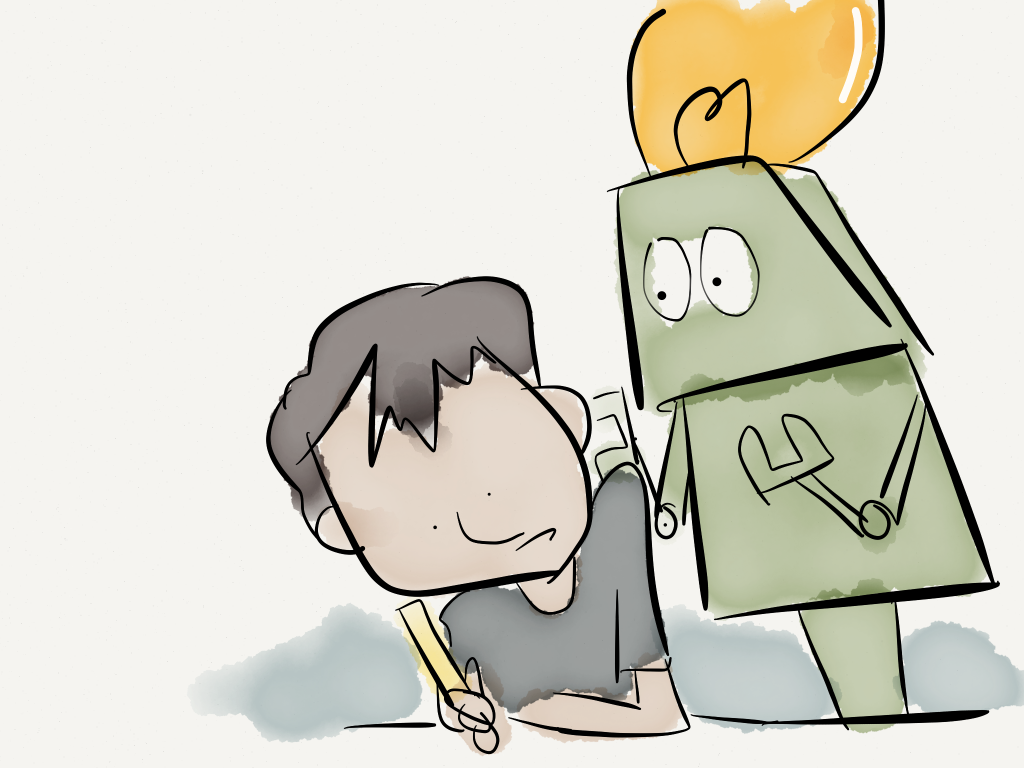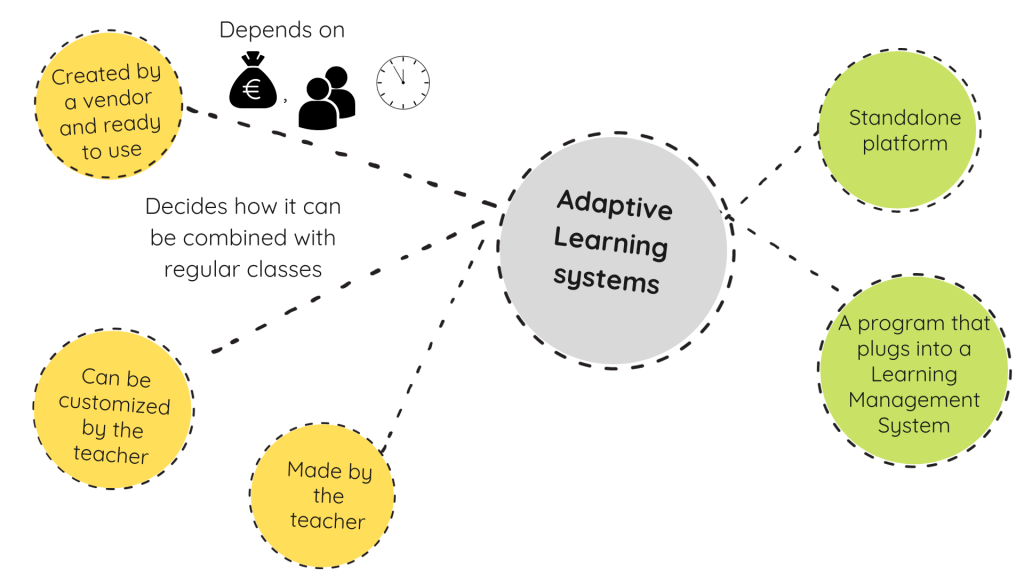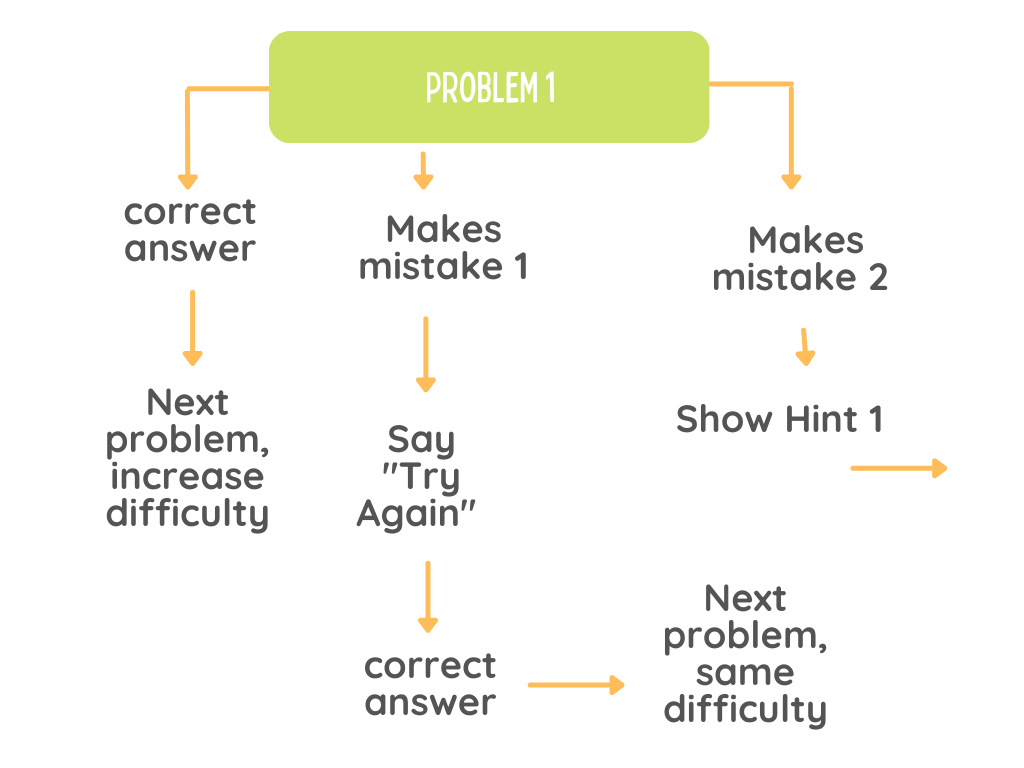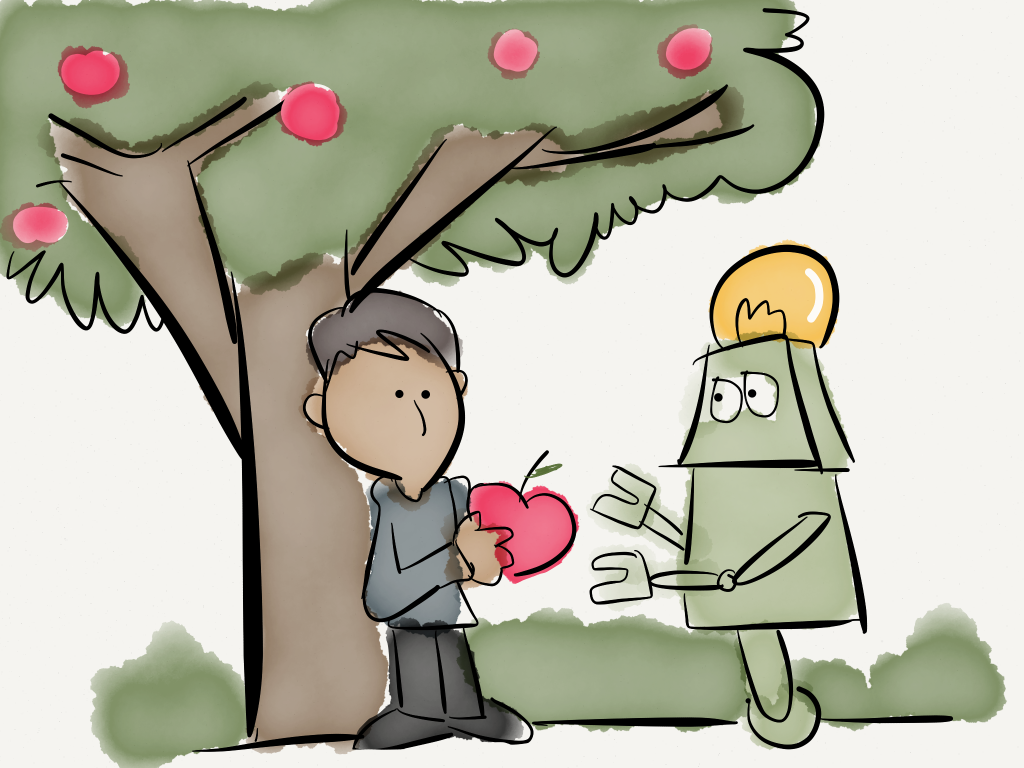Personalising Learning
21 Adaptive Learning Systems
Let’s say that your students are working on problems from a question bank. Imagine there is a person sitting next to each. They watch the steps followed by the student as they arrive at the solution.
Is the student struggling with a concept?
Do they seem to have a misconception?
Perhaps they are upset and could use a little encouragement?
The tutor gives a hint, points out what they are missing.
It can also happen that the student finds the problem too easy and is getting bored. In this case, the tutor assigns another, more challenging problem.
The tutor may even inspire questions and make the student reflect on their own performance. All this while keeping you informed of the student progress.

Intelligent tutoring systems (ITS) are designed to mimic the role of this tutor1. They are a type of adaptive learning systems (ALS) that guide an individual student through each step of a solution. They give hints and feedback as needed. Because of this, ITS are more suitable for subjects like maths where problems and solutions are clearly defined2. But recent ITS have taken on other subjects too.
Adaptive systems and learning
Adaptive learning occurs when digital tools and systems create individual learning paths – the sequence of activities executed in order to learn a given content or skill. The learning paths depend on each individual’s strengths, weaknesses and pace of learning3,4.
The idea of a machine adapting to a student goes back to the 1950s. With the recent advent of technology, the possibilities are now endless. These adaptive learning systems can be used for different purposes – solving problems, learning concepts and/or for assessing the student.
 Many adaptive learning systems are now on the market. There are also authoring tools that help you create an ALS without any knowledge of coding. While creating an ALS might take a lot of time and resources, the teacher need not change lesson plans or style to fit it with lessons. Whatever be their type and form, the technologies used to create ALS vary a lot – not all systems are equal!
Many adaptive learning systems are now on the market. There are also authoring tools that help you create an ALS without any knowledge of coding. While creating an ALS might take a lot of time and resources, the teacher need not change lesson plans or style to fit it with lessons. Whatever be their type and form, the technologies used to create ALS vary a lot – not all systems are equal!
While choosing a system, you have to see how adaptive it is, what part of learning it personalises and whether it allows customisation by the teacher. Apart from that, there are important practical questions such as what equipment is required, how much does it cost and whether training is included in the cost.
Types of adaptive learning systems
Intelligent tutoring systems (see above) are personalised and interactive. They evaluate learning in real time. On the micro level, they adapt feedback when the student is solving a problem. On the macro level, they decide what problem to show next – much like Youtube recommending what video to watch next. Simple tutoring systems use decision trees for rules on what feedback to give. Other systems go beyond pre determined rules and use machine learning to tailor their behaviour1.


Adaptive learning systems can go beyond tutoring. Exploratory learning systems, for example, let students explore a learning environment and choose what interests them. Game based systems package everything in the form of a game. When a student masters one level, they move to the next.
Whatever the type, all ALS should support the learner until they can carry out a task independently6. They should incite reasoning and support decision making. They should also be able to explain their decisions to the teacher and student.
When it comes to choosing and using ALS, or even deciding whether or not to use one, experts advise to always start with the learning2. Ask what student need is to be addressed? Which tool fits this job? How will different students be supported differently5? Studies show that these systems do not have a significant impact on student learning when used for short periods of time. The effectiveness increased when used for one full school year or longer7. If you decide to use one, be prepared to support students on guiding their own learning. Be patient and be ready to experiment, fail and retry2,5.
1 Groff, J., Personalized Learning : The state of the field and future directions, Center for curriculum redesign, 2017.
2 Holmes, W., Anastopoulou S., Schaumburg, H & Mavrikis, M., Technology-enhanced personalised learning: untangling the evidence, Stuttgart: Robert Bosch Stiftung, 2018.
3 Taylor, D., Yeung, M., Bashet, A.Z., Personalized and Adaptive Learning, Innovative Learning Environments in STEM Higher Education pp 17–34, SpringerBriefs in Statistics, 2021.
4 Becker, S. et al, NMC Horizon Report: 2018 Higher Education Edition, Educause, 2018.
5 Feldstein, M., Hill, P., Personalized Learning: What It Really Is and Why It Really Matters, Educause Review, 2016.
6 Wood, D., Bruner, J., Ross, G., The role of tutoring in problem solving, The Journal of Child Psychology and Psychiatry, 1976.
7 Alkhatlan, A., Kalita, J.K., Intelligent Tutoring Systems: A Comprehensive Historical Survey with Recent Developments, International Journal of Computer Applications 181(43):1-20, 2019.
